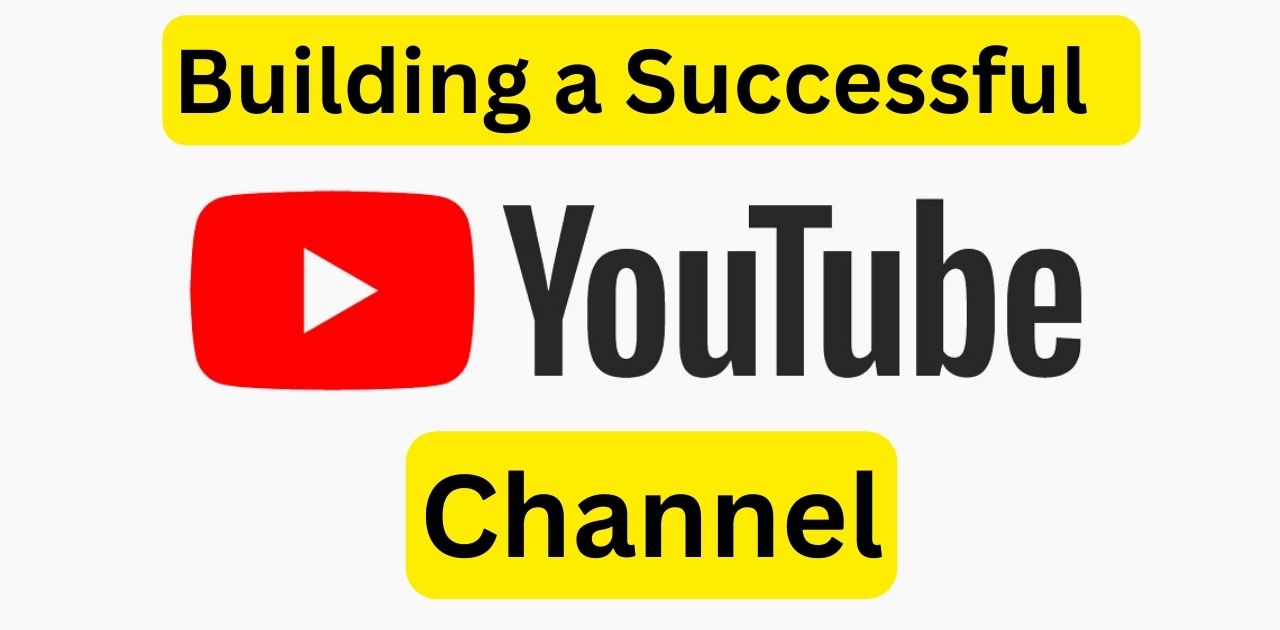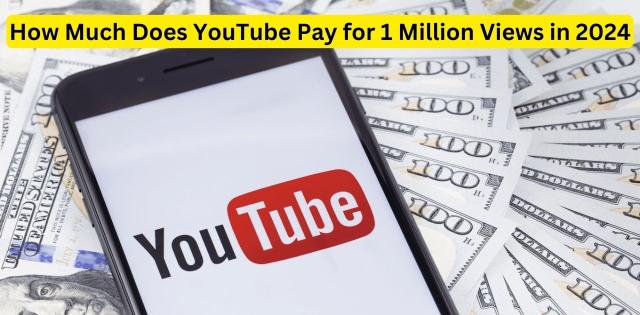YouTube’s revenue sharing model allows creators to earn money from ads displayed on their videos. The amount a creator earns depends on various factors like watch time, viewer geography, ad types, content type, and more. This article provides a detailed breakdown of how much money a YouTube creator can expect to earn from 1 million views in 2024.
Ad Rates and CPM
The main metric used to calculate YouTube earnings is CPM (cost per thousand views). This refers to how much advertisers pay YouTube to show ads on videos. The average CPM rate on YouTube is between $3-$5. However, this can vary greatly based on factors like:
- Video content – Gaming and entertainment videos tend to have higher CPMs than educational or informational content
- Viewer demographics – Videos attracting younger audiences tend to have higher ad rates
- Viewer location – Videos attracting viewers from high-income countries like USA, Canada, UK, Australia have higher CPMs
- Time of year – CPMs are higher during peak advertiser demand periods like holidays or back-to-school season
Based on these factors, YouTube CPM rates typically range from $1 – $10. Assuming a moderate CPM of $5, here’s how much a YouTuber can earn from 1 million views:
1 million views x $5 CPM = $5,000
However, this is just gross revenue, not net profit. To calculate net earnings, you need to factor in YouTube’s revenue sharing percentage.
YouTube’s Revenue Sharing Model
YouTube shares 55% of the total ad revenue generated on the platform with video creators. The remaining 45% is kept by YouTube.
Therefore, from the $5,000 gross revenue generated from 1 million views at a $5 CPM, a creator would get 55% of that amount:
Gross Revenue: $5,000
YouTube Share: 45% = $2,250
Creator Share: 55% = $2,750
So the estimated earnings from 1 million views would be $2,750. This is the net revenue the creator would receive after YouTube takes its share.
Other Factors That Affect Earnings
While the above calculation provides a reasonable estimate, the actual earnings can be higher or lower based on:
- Watch time – Videos with higher average watch times earn more as viewers watch more ads
- Ad types – Skippable video ads usually have lower CPMs than non-skippable ads
- YouTube Partner Program status – Creators not part of the Partner Program only get 45% share of ad revenue
- Invalid traffic – Views from bots, fraudulent sources, etc don’t count toward monetized views
- Ad blockers – Blocked ads don’t generate revenue
Taking all these factors into account, a YouTuber with 1 million views can expect to earn between $1,500 – $3,000. The following table summarizes potential YouTube earnings at different CPM levels:
| CPM | Gross Revenue from 1M Views | Creator’s 55% Share |
| $1 | $1,000 | $550 |
| $2 | $2,000 | $1,100 |
| $3 | $3,000 | $1,650 |
| $4 | $4,000 | $2,200 |
| $5 | $5,000 | $2,750 |
| $6 | $6,000 | $3,300 |
| $7 | $7,000 | $3,850 |
| $8 | $8,000 | $4,400 |
| $9 | $9,000 | $4,950 |
| $10 | $10,000 | $5,500 |
As the table shows, CPM has a big impact on potential YouTube earnings. Though unlikely, even at a high $10 CPM, earnings from 1 million views would only be $5,500.
Tips to Increase YouTube Earnings
Here are some tips creators can use to maximize their earnings on YouTube:
- Create evergreen long-form content – Videos over 10 minutes earn higher RPM rates
- Optimize titles and thumbnails – Catchy titles and thumbnails increase CTR and views
- Promote videos heavily initially – Push videos to get lots of views quickly right after publishing
- Curate custom playlists – Playlists increase watch time and subscriber numbers
- Use YouTube ads to promote videos – Reinvesting ad revenue into video promotion can be beneficial
- Live stream frequently- Super chats and channel memberships provide additional revenue streams
Building a Successful YouTube Channel

To start earning from YouTube, creators need to build their channels by posting engaging content frequently. Here are some tips for growing a successful monetized YouTube channel:
Pick a Niche and Target Specific Audiences
Choose a niche like gaming, beauty, sports etc. Make content tailored to specific viewer demographics like teens, young adults, mothers etc. This makes it easier to attract engaged subscribers.
Optimize SEO to Get Found in Search
Use relevant keywords in titles, descriptions and tags. This helps surface videos when viewers search for topics in your niche.
Post Videos on a Consistent Schedule
Post new videos regularly, like 2-3 times a week minimum. This trains viewers to keep checking back for new content.
Promote Across Social Media
Share videos on Twitter, Facebook, Instagram etc. Leverage cross-promotion to convert social media followers into YouTube subscribers.
Engage with Viewers in Comments
Reply to comments, answer questions, ask for feedback etc. Building a community keeps viewers more engaged.
Analyze Metrics to Refine Content
Use YouTube Analytics to see which content performs best. Make more of what viewers respond positively to.
Collaborate with Other Creators
Collaborate with others in your niche for cross-promotion. Feature their content and have them feature you.
Following these tips can help build a loyal viewer base that keeps coming back. This in turn maximizes watch time, CPM rates and long-term revenue.
Frequently Asked Questions
How much ad revenue can I expect from 1 million views on my YouTube videos?
With a YouTube channel that has over 1 million subscribers, what is the typical ad revenue range I could expect from videos that get 1 million views each? Factors like higher CPM rates for influential channels and the potential to make around $6 per 1,000 views mean the earnings per video in this range could be from $1,200 up to $6,000.
Does YouTube pay per view?
- YouTube pays out a share of the advertising revenue generated on videos to the creators. The more views a video gets, the more ads are shown, and the more money the creator earns.
- The exact amount earned per view depends on factors like the video’s watch time, audience retention, etc. Longer videos and videos that keep viewers watching tend to have higher CPM (cost per thousand views).
- YouTube has minimum thresholds creators must cross before they can monetize videos and start earning. Currently, creators need at least 1,000 subscribers and 4,000 watch hours in the last 12 months.
- The average payout is estimated to be between $0.18 to $0.30 per view for major creators and channels. This can vary significantly though based on content and audience.
- YouTube takes a 45% cut of the ad revenue, while creators get the remaining 55% of what’s earned on their videos.
How much money does YouTube pay for 1 million views?
YouTube pays approximately $2,000-$3,000 for 1 million views, based on the revenue share model.
What factors influence the amount YouTube pays for 1 million views?
Major factors are CPM rates, watch time, ad types, viewer demographics and validity of traffic.
Is the payment solely based on views?
No, payment is not solely based on views. Watch time, ad types and viewer demographics also influence earnings.
How can creators maximize their earnings from 1 million views?
Creators can maximize earnings by making longer videos, using clickable thumbnails, promoting heavily at launch, collaborating with others, and analyzing metrics.
Can creators from all countries earn the same amount for 1 million views?
No, creators from countries with higher ad rates like USA, Canada, UK, Australia can earn more than those from other countries for the same 1 million views.
How much should a small YouTuber expect to earn?
A small or new YouTuber with under 100,000 views per month would likely earn only a few hundred dollars at best. Significant YouTube earnings usually start after crossing 500,000+ lifetime views.
Can you make money from YouTube with no subscribers?
Yes, it is possible to monetize and earn from YouTube even with zero subscribers. However, having subscribers usually results in higher views and watch time, leading to higher revenues.
How many views do you need to get paid by YouTube?
There is no fixed minimum view threshold to get paid by YouTube. However, most creators only begin seeing meaningful earnings after accumulating at least 500,000 lifetime views across their videos.
Does YouTube pay weekly or monthly?
YouTube pays creators monthly by bank transfer or PayPal. Payments are processed in the first half of each month based on the previous month’s earnings.
Are YouTube earnings considered self-employment income?
Yes, YouTube ad revenue is considered self-employment income for tax purposes. YouTubers in the US must file a Schedule C and pay self-employment tax on their earnings.
Conclusion
YouTube pays money to creators who make popular videos. The more views a video gets, the more money YouTube pays. In 2024, creators can make around $2,000 for videos with 1 million views.
How much YouTube pays depends on the video. Long videos and videos people watch all the way through make more money. Videos for kids or about music may make less money. Famous creators can make more money too.
YouTube takes 45 percent of the money videos make from ads. Creators get the rest. To make money on YouTube, creators have to join a program. They need 1,000 subscribers and 4,000 watch hours every year to join. With 1 million video views, creators in the program can expect to earn around $2,000 after YouTube’s cut. The money comes from ads people see when they watch the videos. More views means more ads, so more money for popular videos and channels.








